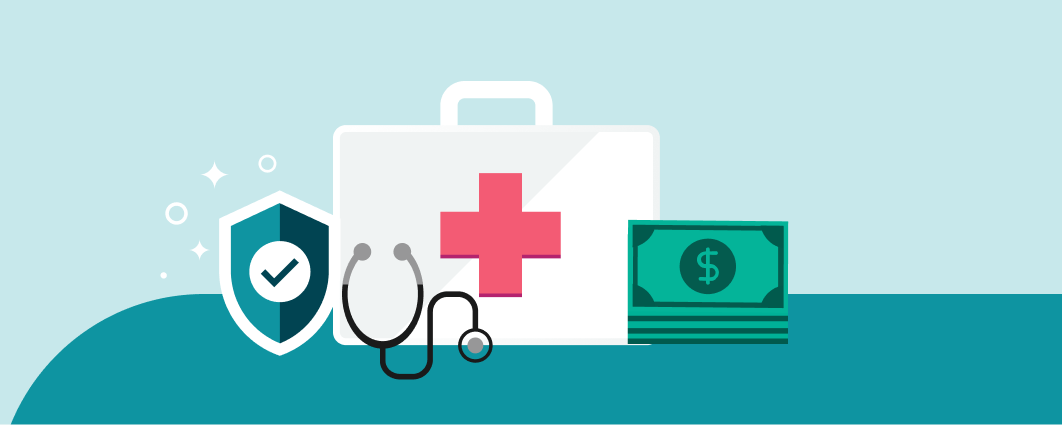Medical Payments Coverage: What It Is and How It Works

Our goal is to give you the tools and confidence you need to improve your finances. Although we receive compensation from our partner lenders, whom we will always identify, all opinions are our own. Credible Operations, Inc. NMLS # 1681276, is referred to here as “Credible.”
If your health insurance has gaps or you’re looking for an add-on to your auto insurance policy to cover medical costs, then medical payments coverage — also known as MedPay — can help.
Road accidents cost a total of $380 million in direct medical costs in the U.S., according to the Association For Safe International Road Travel. No one can predict the total amount of their personal medical bills as a result of an auto accident. This is why it’s important to make sure you have adequate coverage.
Medical payments coverage can help pay for medical expenses or funeral costs after an accident — regardless of who’s at fault.
Here’s what to know about adding medical payments coverage to your auto insurance policy:
What is medical payments coverage?
Medical payments coverage is an add-on for your auto insurance policy that will help cover medical costs you could incur if you’re treated for injuries after a car accident. MedPay is optional in most states — only Maine and New Hampshire require it.
MedPay comes in handy when you or your passengers have outstanding medical bills resulting from a car accident. If you have health insurance, MedPay can help with gaps or your out-of-pocket costs such as your deductible. It’s usually low-cost and gives you added protection knowing that you likely won’t be saddled with medical bills for yourself or those driving with you.
How does MedPay work?
With medical payments coverage, you choose an amount of coverage you wish to have and pay monthly premiums, which are typically rolled into your existing auto insurance policy. If you have medical bills that result from an accident, your insurance company may either consider your health insurance or MedPay coverage as the primary coverage.
Either way, your MedPay coverage can fill in the gaps by paying your health care insurance deductible or remaining bills. Or, your auto insurance company may see MedPay as the primary coverage and you can request a reimbursement for your medical expenses, up to your coverage amount.
With MedPay, you don’t have to pay any copays or deductibles to redeem your coverage. MedPay could provide the necessary coverage if you have liability auto insurance, which only covers the medical bills of the other driver if you’re found at fault.
Also, if you happen to max out your coverage limits either through your health insurance policy or your comprehensive auto insurance policy coverage, MedPay can make up the difference.
What does medical payments insurance cover?
MedPay covers a variety of medical expenses that can apply to you or your passengers. This includes bills for:
- Doctor’s visits
- ER visits
- X-rays
- Ambulance and EMT fees
- Health insurance deductibles and copays
- Chiropractic services
- Surgery
- Funeral expenses
As the policyholder, medical payments coverage also protects you if you’re in an accident in someone else’s car or even struck as a pedestrian.
What does medical payments insurance not cover?
While MedPay coverage seems expansive, there are a few key things it won’t cover. The main purpose is to cover medical expenses from care you receive as a result of a car accident or being struck as a pedestrian. Medical payments insurance won’t cover things like:
- Medical costs that exceed your auto policy limit
- Lost wages due to recovering from medical treatments or surgery after the accident
- Childcare costs if you face limitations after the crash
- Medical treatment that’s unrelated to the accident
- Medical expenses for anyone in the other vehicle who’s involved in the accident
Check Out: 7 Medical Loans to Pay Off Health Care Expenses
How much medical payments coverage do you need?
MedPay coverage limits vary by policy, but the good news is that you can freely decide how much coverage you’d like. To do this, you’ll want to look at your own situation when determining how much coverage you may need. Start by understanding what’s included in your health insurance coverage and any deductibles or copays you’d be responsible for.
For example, if your health insurance covers accidents but requires you to pay a $1,000 hospital copay, you may consider getting at least $1,000 worth of MedPay coverage. If you have a high deductible health plan, you may need to spend quite a bit of money before your insurance starts to kick in.
Let’s say you’re involved in a car accident and need to have X-rays and a CT scan done. The cost ends up being $3,000 and you have a $1,000 emergency room copay with your health insurance. You can use MedPay alongside your insurance coverage to help supplement your out-of-pocket costs.
Also, be sure to look at how your auto insurance company might cover medical expenses related to a crash and what your deductible is.
PIP vs. medical payments
Personal injury protection (PIP) is often mistaken for MedPay as the two are somewhat similar. Both PIP and MedPay help pay for you or your passenger’s medical expenses after a car accident, no matter who’s at fault. However, PIP tends to cover a broader range of accident-related expenses, like lost wages, ambulance and emergency room costs, childcare or cleaning services (if you’re unable to do those things yourself due to the accident) or even transportation to and from doctor appointments.
Here are some key differences between PIP and MedPay:
| PIP | MedPay |
|---|---|
| Available in no-fault states, and may be required, depending on state laws | Optional coverage, only required in two states |
| May come with a deductible | No deductible |
| Can cover things like lost wages, ambulance costs, childcare, and cleaning services | Only covers medical costs |
PIP is required in at least 12 states — usually where MedPay is not available. If PIP is not required in your state, you can usually choose between PIP or MedPay, depending on your needs.
Do you need medical payments coverage?
Medical payments coverage isn’t necessary for everyone. You may want to consider it if you have a high deductible health plan or larger copays you could be responsible for if you need urgent care after an accident.
Also, if you tend to drive other passengers in your vehicle — whether it’s your relatives, coworkers, or friends — MedPay applies to anyone riding in your car at the time of the accident (excluding rideshare passengers).
Other factors to consider include:
- How much coverage your health insurance offers
- How much your auto insurance coverage deductible is and whether your policy would cover medical expenses (coverage varies by state, including which party is responsible in at-fault states)
- Whether you have liability or full-coverage auto insurance
- Whether you have an emergency room copay
- If PIP is required in your state instead
- Whether you might need substitution services such as wage reimbursement or child care fee coverage while recovering from accident-related industries (PIP would offer this while MedPay would not)
Medical payments coverage limits
Medical payments coverage can be purchased in specific amounts, such as $1,000, $2,500, $5,000, or $10,000. Exact amounts will vary depending on your insurance company. The more coverage you select, the higher your premiums will be.
Let’s say you and a friend are driving back from lunch. You have $2,000 of medical payments coverage and a driver fails to yield at an intersection and hits your car.
You and your friend both sustain minor injuries and have to go to the emergency room. At this point, you’d have $2,000 to help cover out-of-pocket medical costs (related to the accident) for you and $2,000 for your friend. You’ll have to determine if this is enough based on your insurance copay and deductible, among other factors. You can reduce or increase your level of medical payments coverage based on your needs.
MedPay covers direct medical or surgical expenses related to injuries from a car accident. Everyone’s level of need for this coverage and the coverage amount will vary depending on their situation, but this could be a helpful way to cover all your bases and fill any gaps in your existing insurance coverage amount.
If you’re shopping for auto insurance, we can help get you started. The Credible marketplace, which includes insurance services by Young Alfred, makes it easy to find an insurer and policy that’s right for you.
Disclaimer: All insurance-related services are offered through Young Alfred.




